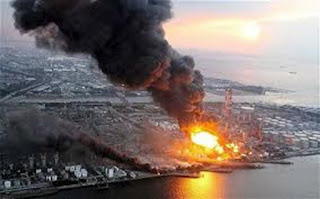Disasters and Crises – 10 Lessons on Early Warning
Aerossurance has recently looked at how conventional responses can fail in the face of a crisis.

Dr Ian Mitroff, Professor Emeritus at the USC Marshall School of Business at the University of Southern California, has identified 10 lessons on early warning, which are also highly relevant to how accidents evolve:
- All disasters and crises are preceded by early warning signs of impeding failure: Barry Turner’s ground breaking research Man Made Disasters, published in 1978, highlights the prevalence of such warnings and how they are often overlooked during the ‘incubation period’. UPDATE 16 January 2017: see this review of Man Made Disasters.
- Signals are not self-amplifying or self-blocking: Mitroff observes that it is organisations that can either amplify or block these early warning signs, the very reason for a culture that seeks out potential early warning signs. Margaret Heffernan has written about Wilful Blindness, and how organisations can block out these warnings, which Mitroff comes to in his third lesson:
- Signals are part of the organisation: Signals don’t exist on their own. Organisations get the news they encourage. An organisation that discourages or downplays certain types news will discourage that news from being reported in future.
- Signal detection is a reflection of our priorities: Organisations are swamped with information, so unless we give priority to the warning signs for crises or accidents, they are unlikely to be noticed. In turn, if we only search for certain types of crises or for certain threats we may well miss the signs for other types.
- Signal detection needs detectors: It is important to have mechanisms that detect early warning signals. Within an organisation, free and open safety reporting, a vigorous audit programme that looks at the effectiveness of controls not just compliance and a robust, even paranoid, process of management review that seeks out indications of problems (and sees early warning as ‘good news’ not ‘bad news’) can all help.
- Different signals require different detectors: So while the mechanisms mentioned above are relevant to safety threats, other mechanisms are required to detect the early warning signs of financial fraud, civil disturbances or industrial unrest.
- Not all signals are alike: Mitroff proposes that signals are differentiated by their source (internal or external to the organisation) and type (technical or human).
- Signal detectors need to be monitored: Mitroff uses the example of a 1991 power outage in New York. The AT&T back-up generator failed and the tertiary battery system came into operation. Activating the 6 hour battery system triggered an alarm, but the alarm was not spotted and when the battery expired air traffic controllers lost essential communications. The reason the alarm was not heard: both operators on the same shift had been rostered onto a training course. Ironically the course was on alarm systems!
- Signals have to be transmitted to the right people: As sadly illustrated in Hawaii in 1941.
- Individual signal detection is not enough: Often multiple weak signals from multiple sources need to be collated an analysed.
See also: How to Lead During a Crisis: Lessons From the Rescue of the Chilean Miners

Recent Comments